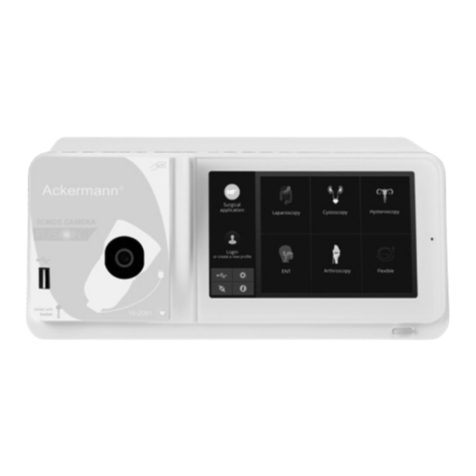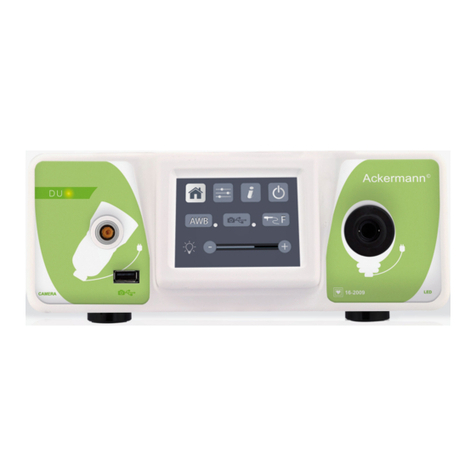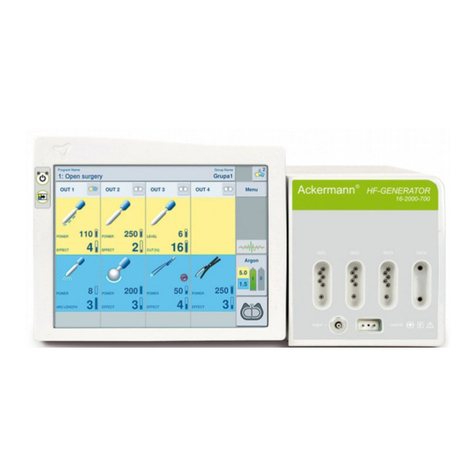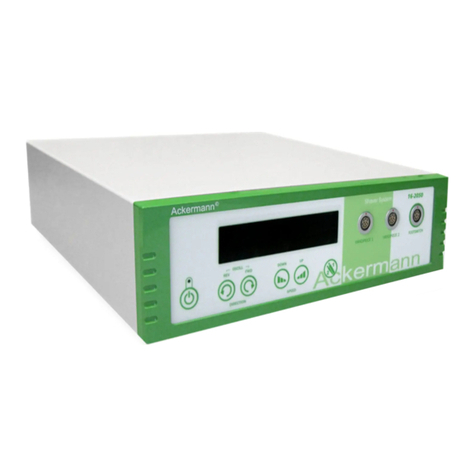USER MANUAL 16-2000-120 Rev. 02/2016
2. ELECTROSURGERY BASICS
Currently, electrosurgery is a technique used in nearly all kinds of surgical procedures. In order to use
electrosurgery effectively, it is necessary to learn and understand it, and to apply the safety rules designed for
maximum protection of both the surgeon and the patient.
An electrosurgical unit is a device that uses electricity to generate high-frequency (HF) alternating current.
The thermal effect caused by the HF current flowing through the tissue is used for tissue cutting or
coagulation. An electrosurgical unit generates alternating current of frequency higher than 300 [kHz], so there
is no risk of unintended effect of muscle and nerve electrolysis/stimulation.
When working with an electrosurgical unit generating high-frequency current, always remember
the two fundamental rules:
- the current flows along all the available paths,
- the HF leakage current flows between two adjacent conductors even if they are separated
from each other.
2.1. MONO OLAR O ERATION
In the monopolar mode, the HF current is delivered to the tissue by the
active electrode. The cutting or coagulation effect results from the
concentration of the high density HF current on the small surface of the
active electrode. This causes an increase of temperature and water
evaporation from the tissue in the direct vicinity of the active electrode
and eventually results in haemostasis and arrest of bleeding, or cutting of
the tissue.
Subsequently, the HF current flows to the neutral electrode where it is
dispersed. In this way, the density of the HF current decreases and no
unintended thermal effect occurs at the site of the neutral electrode
application. From the neutral electrode the HF current returns to the unit.
2.2. BI OLAR O ERATION
When the unit operates in the bipolar mode, the HF current flows
between the two jaws of a bipolar instrument and concentrates
exclusively on the small area located between them. In the bipolar mode
the dangerous current flow through the patient’s body to the neutral
electrode does not occur, so the risk of burns occurring outside the
immediate surgical area is minimised. Thus, the bipolar coagulation
modes are safer than the monopolar modes and they are particularly
recommended for procedures involving patients with cardiac pacemakers
or for procedures performed on organs of a small cross-section area. In
the bipolar mode, the neutral electrode is not required.
AGE 6 OF 39

































